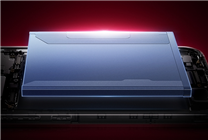Intel’s Next-Gen Graphics Cards: The Anticipation of Ruixuan B770 and BMG-G31
Summary
- Intel’s second-generation graphics cards, Ruixuan B580 and B570, have been on the market for almost a year, leaving high-end models anticipated.
- Rumors of the high-end core "BMG-G31" suggest it will include a gaming card and three professional variants, with Ruixuan B770 likely being the gaming option.
- New insights about the Nova Lake processors hint at intriguing advancements in graphics technology, but release timelines remain uncertain.
Intel’s launch of its second-generation mainstream independent graphics cards, the Ruixuan B580 and B570, almost a year ago has left enthusiasts eagerly awaiting the arrival of high-end models. Recent developments have sparked intrigue, especially surrounding the unconfirmed high-end core known as "BMG-G31," which is rumored to encompass one gaming card and three professional graphics options. Speculation suggests that the anticipated gaming model will be the Ruixuan B770.
The BMG-G31 and Its Implications
According to leaked information, including an unreleased engineering driver, the existence of the BMG-G31 appears promising for gamers and professionals alike. As the focus on high-performance graphics intensifies, this forthcoming release is creating buzz in the tech community. The Ruixuan B770, touted to be the gaming variant within the BMG-G31 lineup, captures significant interest given its potential capabilities.
Nova Lake Processors: A Glimpse into the Future
Alongside discussions of the BMG-G31, the engineering driver also mentioned the next-generation desktop processor, Nova Lake (NVL). This processor is expected to integrate the innovative Xe3P architecture core display, which may revolutionize visual performance in desktop applications. Although details surrounding this processor remain limited, it signals a shift towards enhanced processing power that could complement the high-end graphics offerings.
Insights from Intel’s Leadership
Tom Peterson, an Intel Fellow and spokesperson for the graphics card division, has provided some insights during recent interviews. He emphasized that core graphics technology is a primary focus for Intel’s GPU strategy. However, when pressed about the Ruixuan B770, Peterson refrained from confirming or denying its existence, creating a shroud of mystery around the anticipated card.
Release Timeline and Expectations
Previously, it was suggested that Intel might unveil the Ruixuan B770 in the fourth quarter of this year. However, as the timeline approaches without any confirmed sign of a launch, expectations are tempered. The delay in releasing high-end models like the BMG-X3/X4, which boasts up to 512MB of cache, further complicates the anticipation surrounding Intel’s graphics card plans.
The Competitive Landscape
In the rapidly evolving graphics card market, Intel faces fierce competition from established players like NVIDIA and AMD. Each company continually strives to innovate, pushing the boundaries of performance and efficiency in their graphics offerings. As such, Intel’s ability to deliver on the promises of groundbreaking technology with cards like the Ruixuan B770 and the BMG-G31 will be crucial in establishing its foothold in this competitive arena.
Conclusion
As Intel navigates the complexity of graphics card development, the anticipation surrounding the Ruixuan B770 and the BMG-G31 intensifies. While information remains somewhat elusive, the insights from leaked drivers and statements from Intel executives provide a glimpse into the company’s aspirations. Gamers and professionals alike eagerly await news of these high-end models, which promise to redefine performance standards in the industry.
For the latest updates on Intel graphics technologies and potential releases, staying attuned to industry news will be vital. The landscape of computing visuals is on the brink of transformation; those who keep a watchful eye will be well-prepared to capitalize on the innovations that are sure to come.









